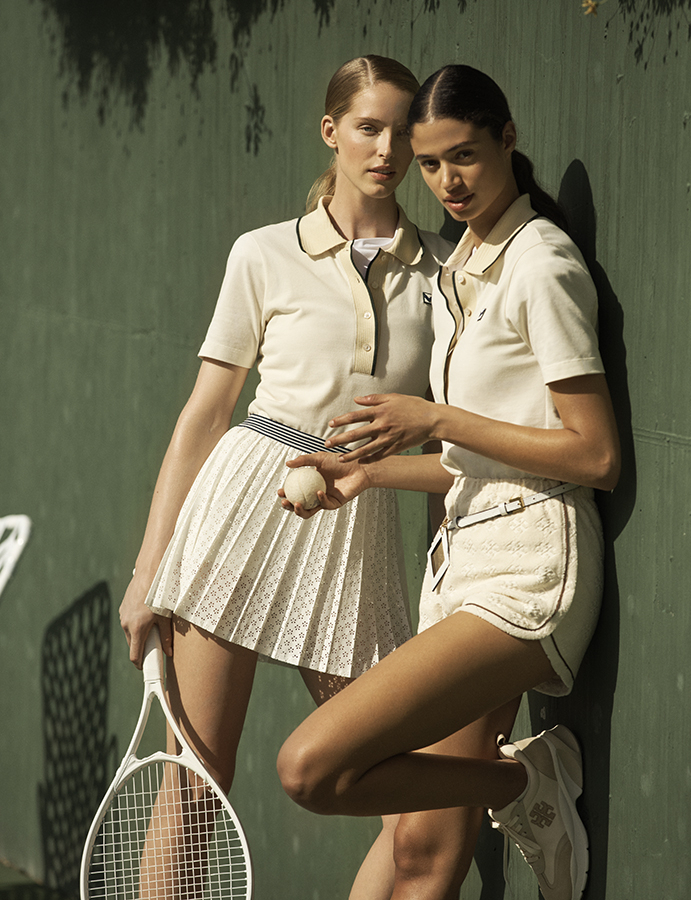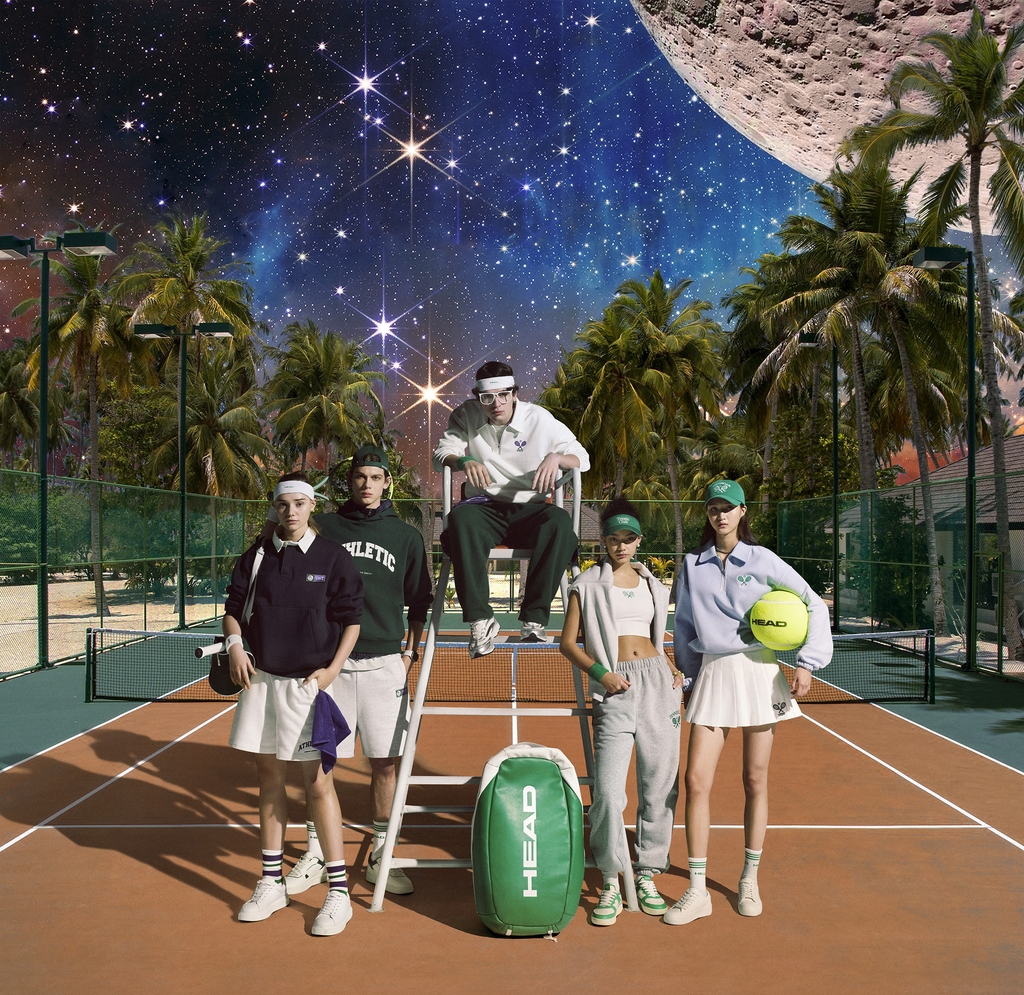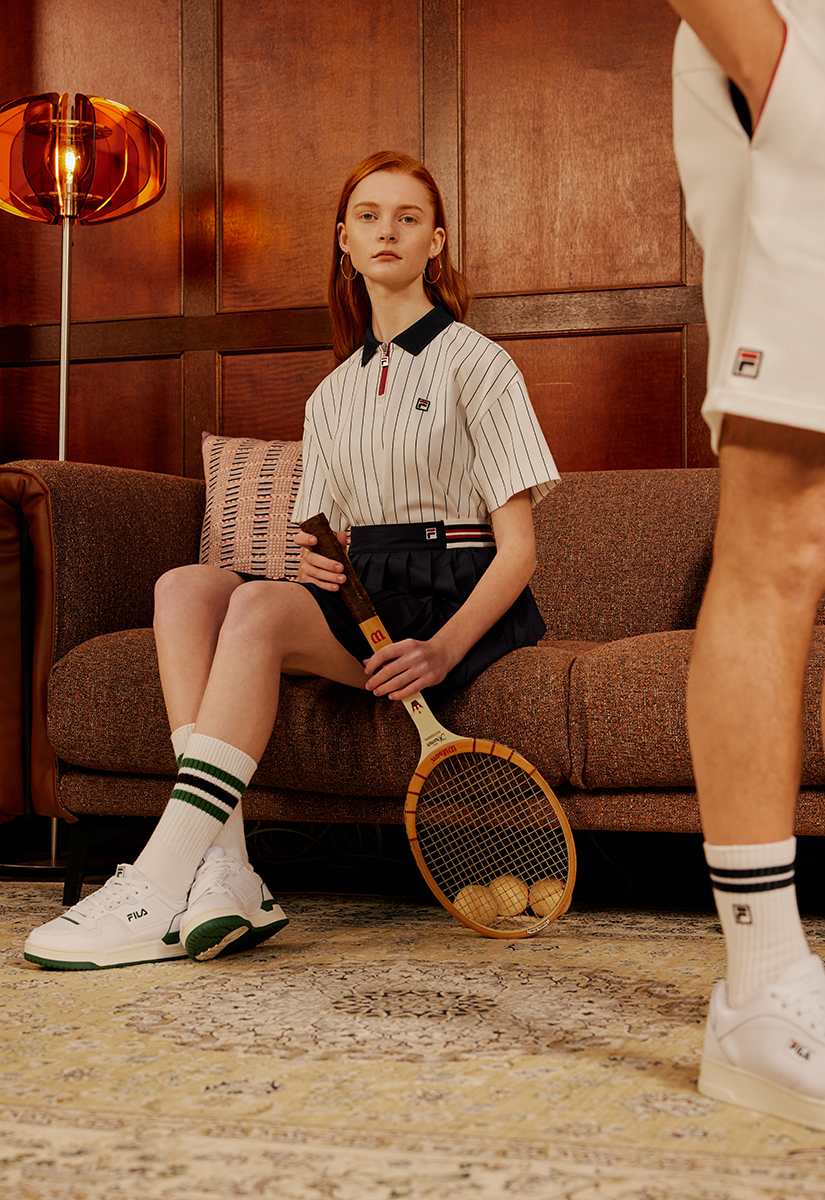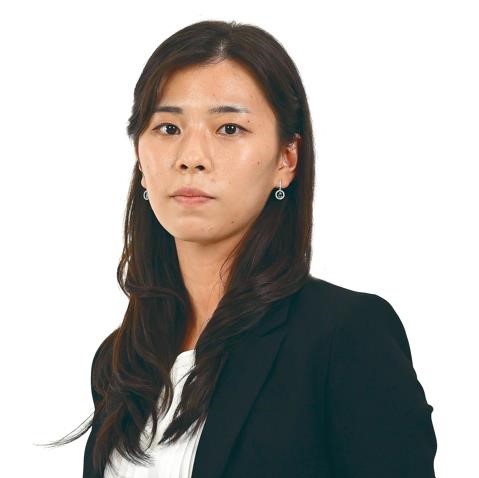[Weekender] Tennis launches strong serve at golf in Korea
Sports trend shifts from golf to tennis; but industry watchers say whether tennis will stay for the long run remains uncertain
By Lee Yoon-seoPublished : June 24, 2023 - 16:00

Tennis is the new black, and the sport is giving golf a run for its money in South Korea.
Koreans' expenditure on tennis-related commodities rose by 440 percent compared to 2019, according to BC Card's analysis of the credit card spending of its some 42 million users.
Data compiled by the big data center at credit card firm Shinhan Card also showed the amount of spending at tennis courts jumped by 336 percent, compared to the same period in 2019.
And companies have been swift to jump on the burgeoning trend.
Shinsegae International recently contracted a 10-year retail sales license with global sportswear brand J.Lindeberg. The company said the move came as the Korean retailer aimed to expand J.Lindeberg's golf-centric Korean business to sales of tennis-related apparel and equipment.
"(With the long-term extension), we aimed to strengthen partnerships with overseas brands with high growth potential, and expand business on promising sectors (such as tennis) to spur business growth," a Shinsegae official said.
Korean clothing company F&F acquired premium Italian sportswear brand Sergio Tacchini for $63 million last July, and is preparing to operate its first tennis-only brand starting this year.
Tory Burch Sports, a brand under the US luxury fashion label, introduced its new spring lineup this year in Korea, which largely centered on tennis apparel collections.
"Our lineup (of goods) previously mostly centered on indoor sportswear. However, we are aggressively expanding our lineup, reflecting the changing trends," said an official from Samsung C&T, which retails the Tory Burch brand here.
"We reorganized our brand around sports that are in high demand from the younger consumers," she added.

Korean fashion giant Kolon Industries FnC relaunched Austrian tennis brand Head in March after three years of brand restructuring. Head, whose domestic sales right had been acquired by Kolon Industries FnC in 2009, had not been releasing new products since 2020, but the company said it resumed operations amidst the latest tennis boom.
During its major reorganization conducted last August, sportswear brand Fila Korea launched an in-house tennis project team and large-scale marketing activities which aimed to link tennis brand ambassadors with sponsors.
Among Fila Korea's 2023 spring and summer collection, tennis apparel items accounted for about 30 percent of its clothing sales, an official said.
Korean companies' expansion in marketing for its tennis-related business comes as recently, the growth in golf business -- which had primarily been Korea's main sports cash cow -- slowed considerably.

The sales growth of Shinsegae department store's golf wear category rose 7.8 percent on-year in the first quarter of 2023. The performance was a significant chunk less than those in the corresponding period in previous years, at 45.6 percent in 2022 and 92.5 percent in 2021.
During the same period, Hyundai Department Store's sales growth for golf wear stood at 15 percent, tumbling from 70.3 percent in 2022 and 65.5 percent in 2021.
"Before tennis, there was golf. However, golf is expensive and a time-consuming sport, so a lot of consumers are dropping the activity as their pastime," said Lee Soo-jin, a researcher at Seoul National University's consumer trend center.
"Not only is it an expensive sport, but the sport has low accessibility. For example, the golf courses require long car drives to get there. Golf matches are also affected by weather. However, tennis can be enjoyed in a relatively easier fashion," she said.
Korean consumers, Lee said, also tend to prioritize cost-effectiveness, which also gives tennis an edge over golf.
"Tennis is also a rigorous sport. Two hours of playing tennis equals about four hours of golfing, in terms of exercise," she added.
Despite tennis' attractive draws, industry watchers were not confident the tennis boom could stay for the long run.
"One of the biggest characteristics of Korean consumers is that they tend to hop on the trend just because it's trendy. Such consumer characteristics are especially visible in trends of outdoor sports," Lee said.
"Golf was such case -- if another convenient and trendy sports is found, there's a possibility Korean consumers would flock to that sport," she said.
"There is no guarantee that the tennis boom will last long. (The industry deems that) the golf craze ended unexpectedly quickly," added an official at Fila Holdings.
The official added that if Korea builds more tennis courts to support growing demand for the sport, the tennis boom "could last longer."
Lee of the SNU consumer trend center said, however, golf and tennis are different in nature, and such factors could potentially help tennis business owners and related industries to flexibly respond to changing trends.
"Tennis-related industries are less likely to be hit by sales loss than golf-related industries, because a lot of capital and investment must be made to establish infrastructure for golf-related facilities, equipment and even apparel," she said.
"Tennis has the potential to flexibly respond to lessened demand, which could potentially work in favor for Korean business owners."











![[Hello India] Hyundai Motor vows to boost 'clean mobility' in India](http://res.heraldm.com/phpwas/restmb_idxmake.php?idx=644&simg=/content/image/2024/04/25/20240425050672_0.jpg&u=)








